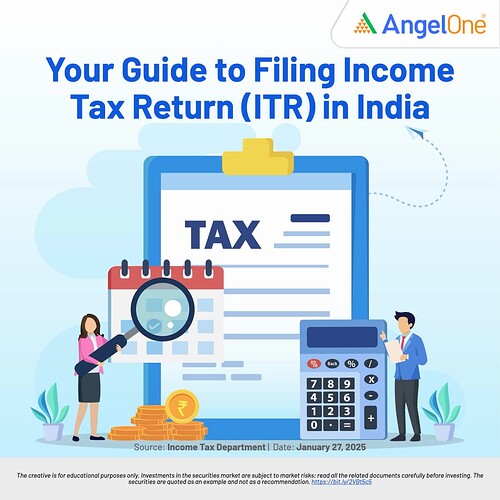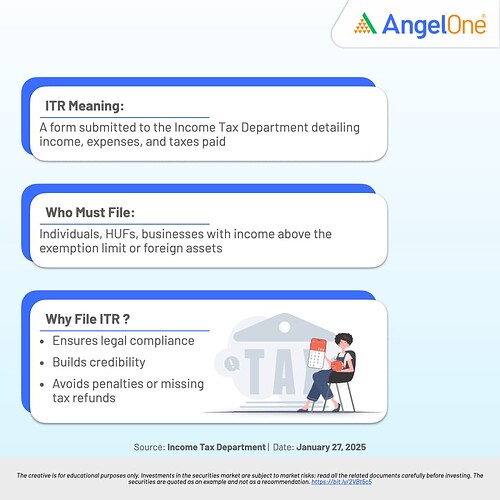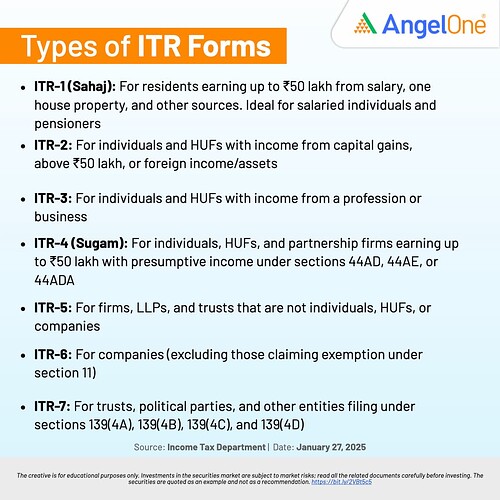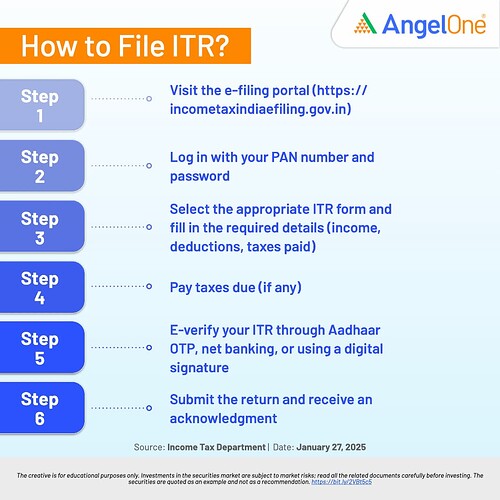Income Tax Return Filing in India
An ITR is a form submitted to the Income Tax Department (ITD) detailing your income, expenses, and taxes paid during a financial year. Once filed, the ITD assesses its accuracy. Any discrepancies require corrections or supporting evidence.
Who Needs to File an ITR?
You must file an ITR if you meet specific criteria:
- Individuals & HUFs: Annual taxable income above the exemption limit or foreign income/assets.
- Political Parties: Taxable income exceeding the basic exemption under Section 139(4B).
- Indian Residents: Claiming relief under DTAA or authorised to operate foreign accounts.
- Businesses & Entities: Domestic/foreign companies earning in India, entities seeking tax refunds, or carrying forward losses.
- Others: Associations, cooperative societies, and entities falling under sections like 10A, 44AB, or 92E of the Income Tax Act.
Types of ITR Forms
ITR forms cater to specific taxpayer categories:
- ITR-1: For resident individuals earning up to ₹50 lakh annually from salary, one house property, and other sources.
- ITR-2: For individuals/HUFs with capital gains, income above ₹50 lakh, or foreign assets.
- ITR-3: For individuals/HUFs earning from business or profession.
- ITR-4: For individuals, HUFs, and firms with presumptive income under Sections 44AD/44AE.
- ITR-5: For entities like AOPs, BOIs, and cooperative societies.
- ITR-6: For companies except those exempt under Section 11.
- ITR-7: For entities filing under Sections 139(4A)-(4D).
Filing Process: Online and Offline
- Online: Log in to the e-filing portal, input details, pay taxes (if applicable), and e-verify the ITR.
- Offline: Download the appropriate ITR form, fill it, create a JSON file, upload it, and verify the submission.
Why Timely Filing is Crucial
Filing ITRs on time isn’t just a legal obligation; it also builds financial credibility and prevents penalties. Moreover, timely filing ensures eligibility for refunds and other benefits.
Disclaimer: This guide is for informational purposes. Consult a tax professional for personalised advice.



